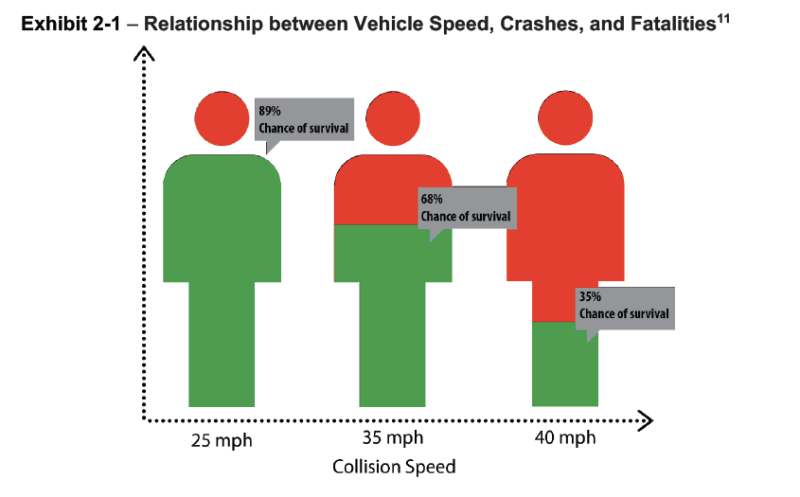The Los Angeles Times has a great editorial today urging Sacramento to "get rid of" the "outdated, absurd and downright dangerous" 85th percentile state speed limit law. Read the full piece at the Times website. Below are a few excerpts:
The way California cities are required to set speed limits is outdated, absurd and downright dangerous for pedestrians and bicyclists — and it’s not even backed up by scientific research on safety.
That’s why, at a time when many communities are seeking to slow down cars to save lives, cities are still being forced to raise speed limits as a condition of enforcing their traffic laws. It’s dangerous and counterproductive, and it’s about time state lawmakers fix the problem. They will have another chance to do so this year, and they should seize it.
The problem stems from a decades-old state law that essentially requires cities to set speed limits based on how fast people are already driving on that stretch of road, regardless of whether that speed is safe or whether the street has a history of wrecks. It was adopted more than 60 years ago to prevent cities from setting speed traps, or arbitrarily low speed limits aimed at sticking drivers with pricey tickets.
The way the law works is that in order for police to use radar guns or other electronic devices to help enforce speed limits on a particular street, cities have to conduct regular surveys of traffic there. The limit must then be set at a speed exceeded by only 15% of the vehicles surveyed, rounded to the nearest 5 mph. The mandate means that if cities want to enforce the speed limit on a street where drivers routinely put the pedal to the metal, they often have to raise it to a level where most of that behavior would be legal. [...]
But more recent research suggests that drivers don’t naturally choose prudent speeds and, in fact, they frequently underestimate how fast they’re driving by 10% to 30%. The National Transportation Safety Board has said there is no convincing evidence that pegging speed limits to traffic flow results in safer streets.
The more common and unintended consequence of the 85th percentile rule is what’s known as speed creep. Higher speed limits encourage motorists to drive faster, which in turn prompts higher speed limits. [...]
Lower speed limits by themselves won’t solve the problem. Cities need to engineer streets for safety, which can mean redesigning roads and intersections to make drivers slow down. It also means ensuring that communities have protected bike lanes, sidewalks and safe pedestrian crossings.
None of these steps will be easy; Californians have fiercely resisted safety-promoting reforms that might slow their commutes. But at the very least, lawmakers should get rid of a system that forces cities to give in to speeders before cracking down on them.
This isn't the first time the Times weighed in against California's absurd speed limit law. A similar excellent 2018 editorial also urged reforms.
Since then, Assemblymember Laura Friedman has shown great leadership on the issue. Her efforts are just beginning to bear fruit.
Friedman's 2018 speed limit reform bill, A.B. 2363, was watered down by opponents - including the California Highway Patrol, the Teamsters, the Auto Club, and trucking industry - into just forming a Zero Fatalities Task Force. Earlier this year, that task force delivered its recommendations report, and it calls for major speed limit law improvements. Read more about the report at Streetsblog California and LAist. Soon after the report release, Friedman introduced new legislation, A.B. 2121, which would take more small steps toward much-needed speed limit reforms.
The city of L.A. has been upping its enforcement game to curb scofflaw speeders, but without state reforms, the city's hands are tied. It's time for L.A. leaders to strongly loudly support Friedman's efforts and to end California's absurd speed law this year.







